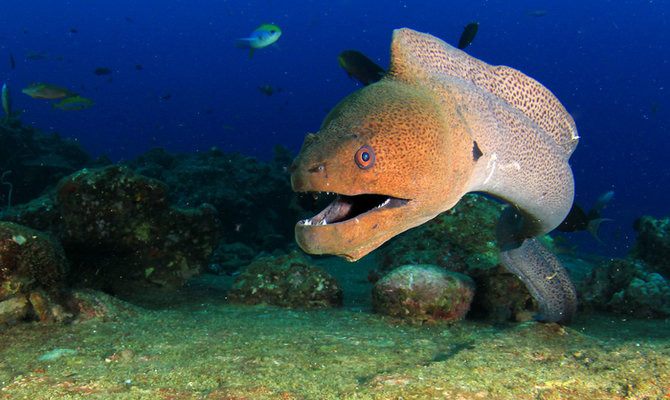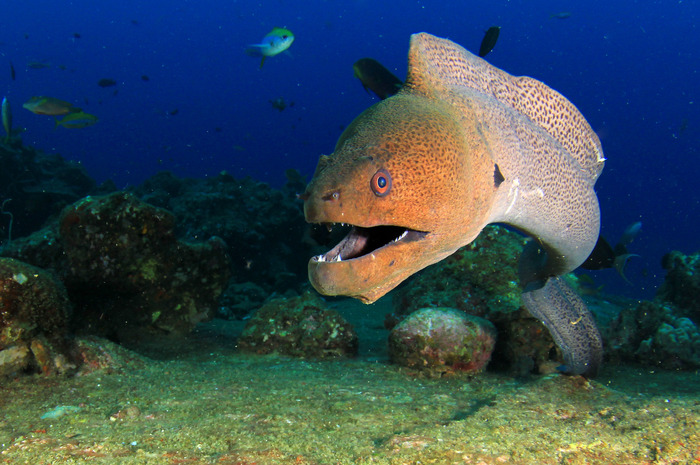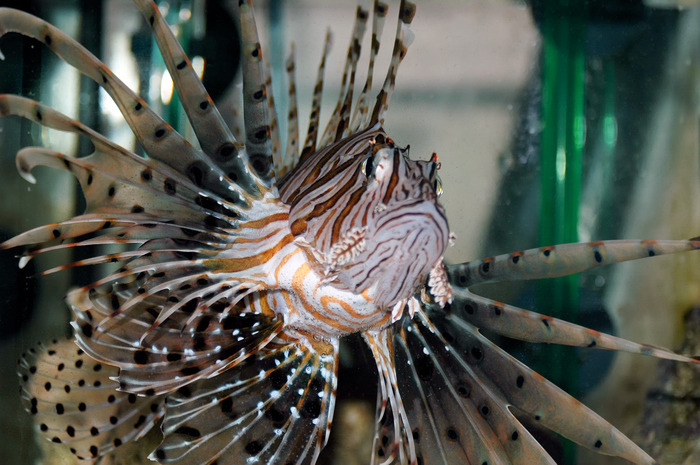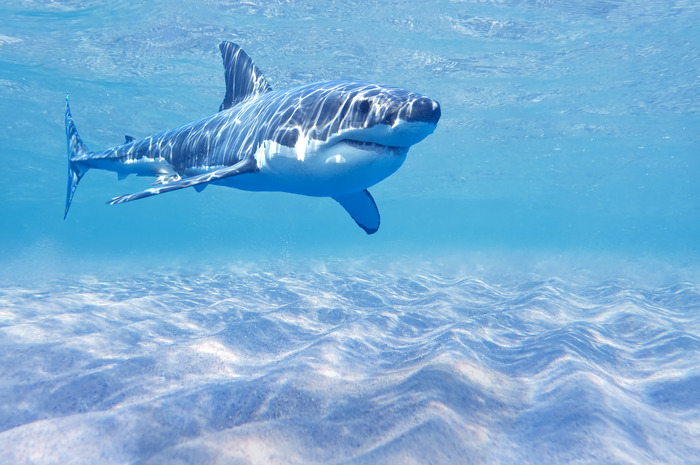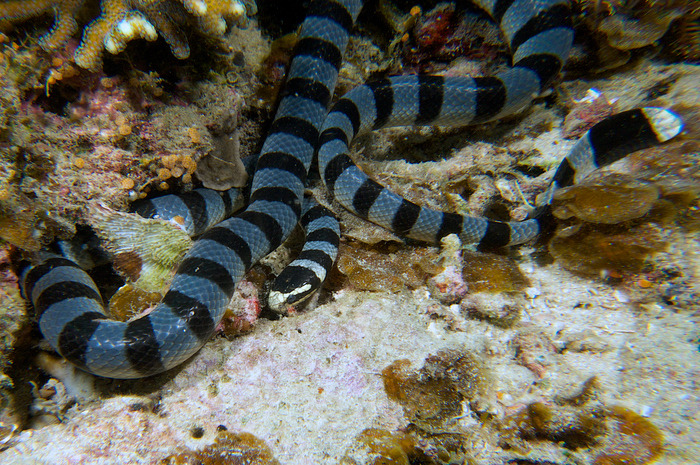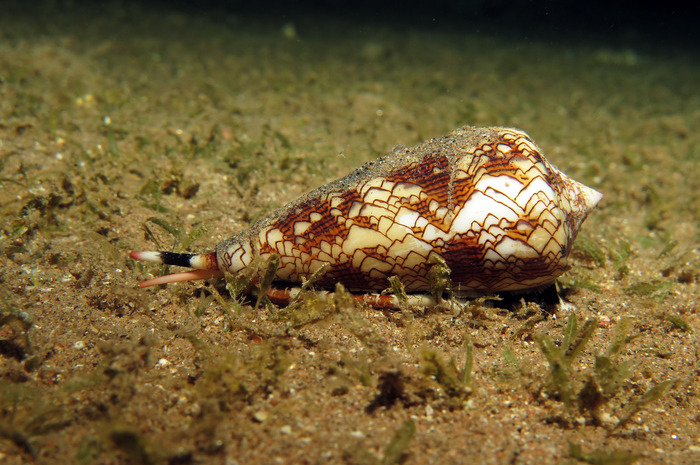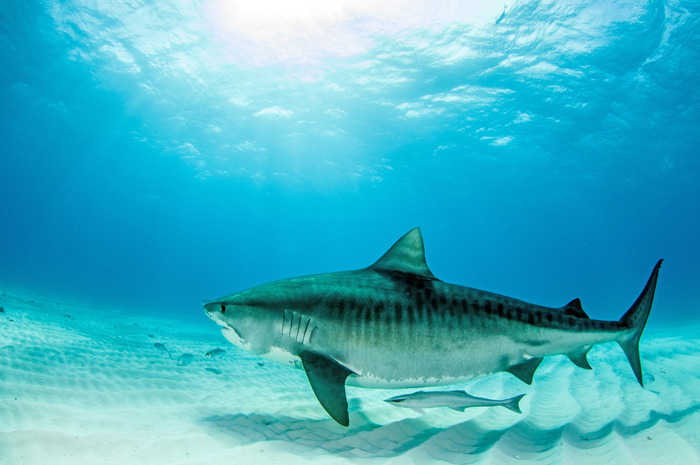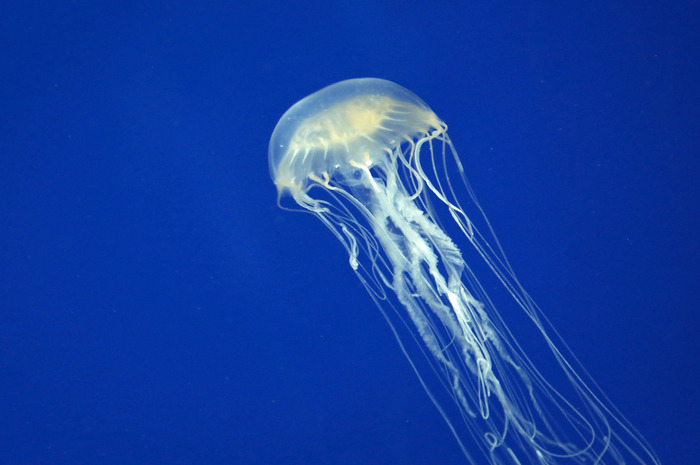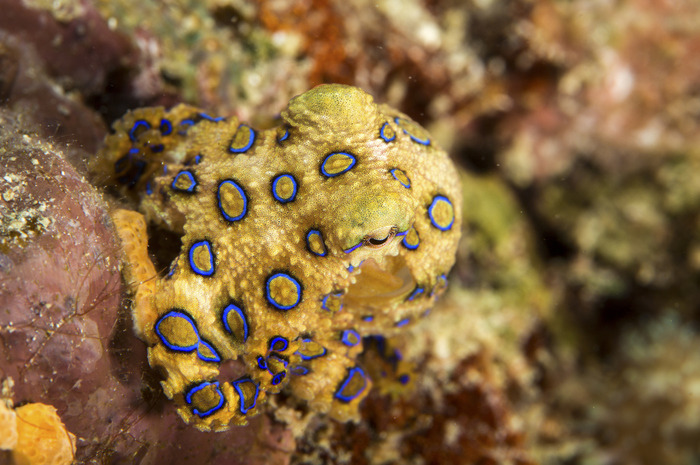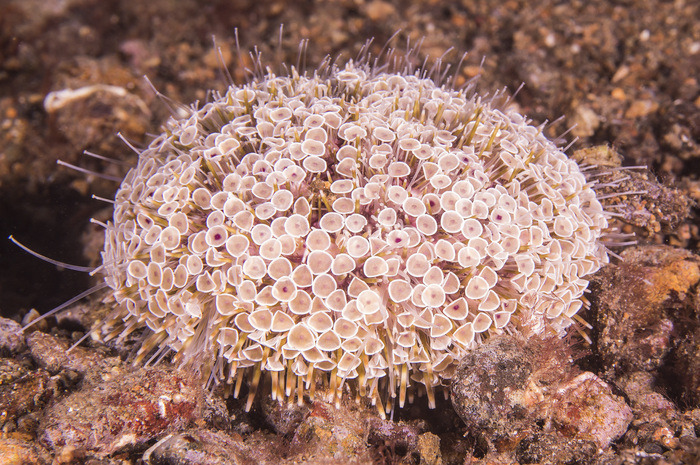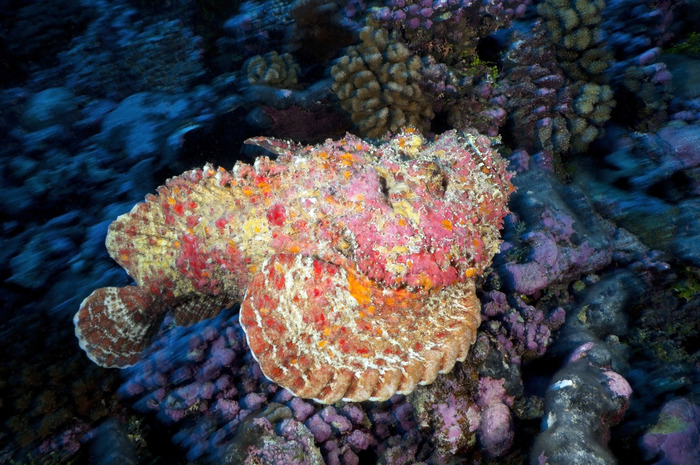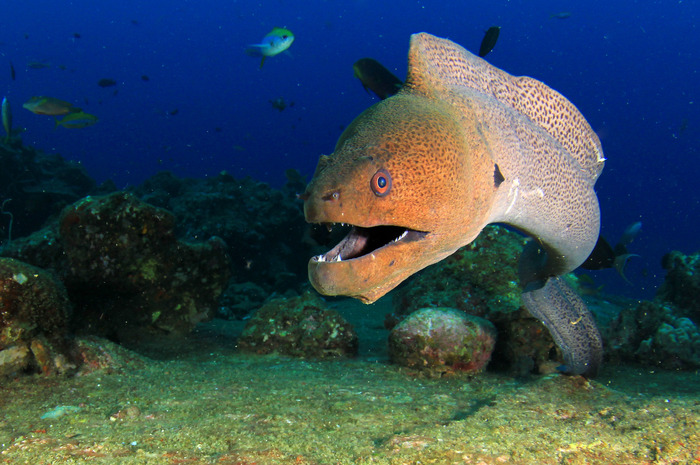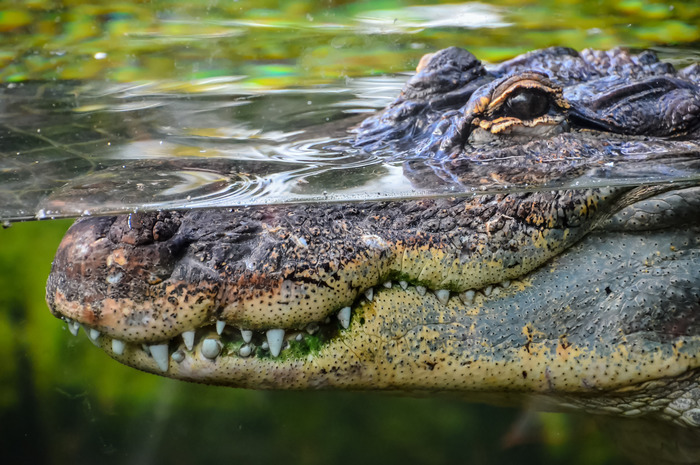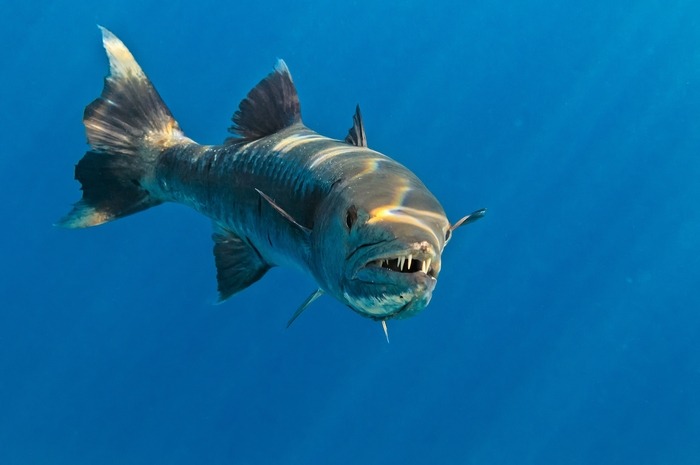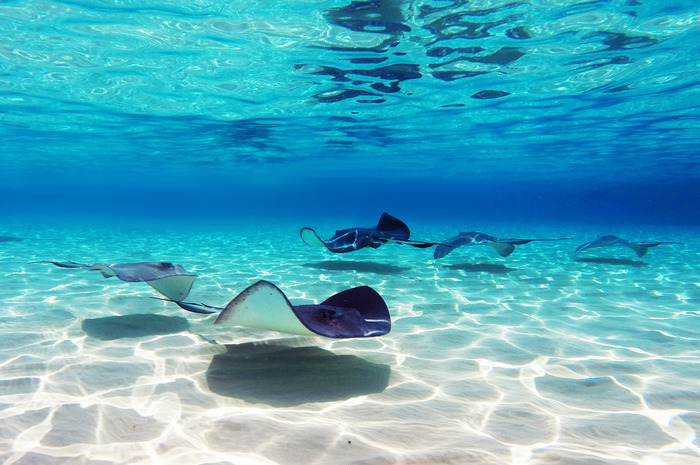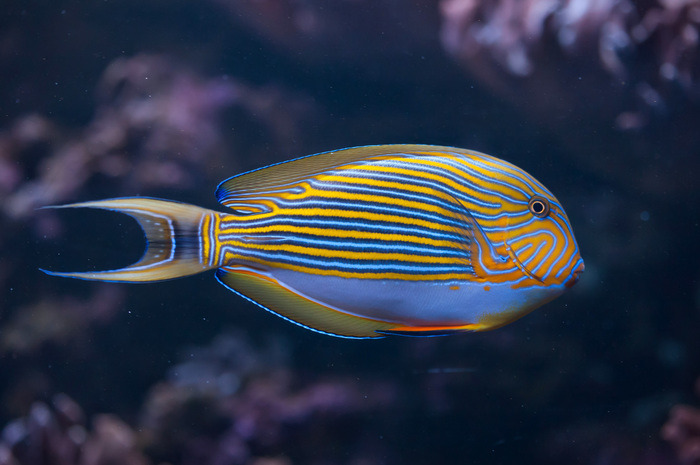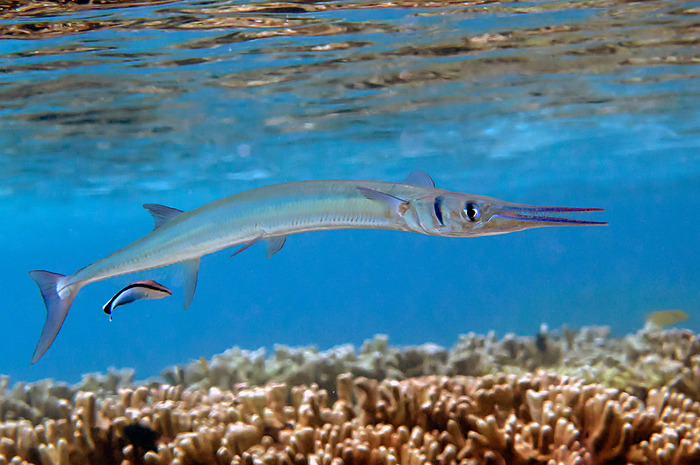The Most Dangerous Sea Creatures We Never Want To Encounter
The Most Dangerous Sea Creatures We Never Want to Encounter
Next time you're out swimming, surfing, diving and boarding in the ocean, you may want to consider the likelihood of encountering a dangerous sea creature.
There is more danger lurking around the ocean than you may be aware of. From the deadly venom of a blue-ringed octopus, to the ginormous bite of a great white shark and the powerful sting of a box jellyfish, it's always important to be aware of your surroundings.
Reduce your chances of stumbling upon a dangerous sea creature by educating yourself about which ones are the most dangerous and where they are commonly located.
Lionfish
This red, white and zebra striped fish is about as small as a "tea cup" with very dangerous venom and a deadly sting. A lionfish's sting is said to be extremely painful; it can cause nausea and breathing difficulties, according to National Geographic.
Great White Shark
The great white shark is also known as white death. Great white sharks are responsible for the greatest number of recorded shark attacks on humans. They have attacked boats, sinking them, and then attacking the people falling overboard. *Fun fact: You can go cage diving in South Africa and see great white sharks up close.
Sea Snakes
These snakes have adapted to life in salty sea water. They are commonly found in the Indian and Pacific Ocean and they come in many different sizes and colors. They have very strong venom and are poisonous to humans. However, they will not usually strike unless they feel threatened. *Fun fact: They can reach to approximately 9-feet in length.
Textile Cone Snail
The venom of the cone snail is strong enough to paralyze instantly, according to National Geographic. There are approximately 500 species of cone snails, the textile cone snail being the deadliest. They have also been responsible for a number of human deaths.
Tiger Shark
Tiger sharks are found close to the coast in tropical waters. They like to stay in deep waters, but seek prey in shallow water. It is said that tiger sharks like to eat literally everything, and they eat their prey whole. Tiger sharks are responsible for numerous attacks on humans, most of which lead to fatalities. *Fun fact: Tiger sharks develop for up to 16 months in their mother's body until they are ready to come out.
Box Jellyfish
As the temperature gets warmer, jellyfish are found closer to the shore. Therefore, the warmer the ocean, the higher the possibility of encountering a jellyfish. A jellyfish sting can cause headaches, vomiting, muscle spasms, an allergic reaction, chills, fever and difficulty breathing. Box Jellyfish are among the most dangerous because they have extremely powerful venom. Stings from them have caused death amongst humans.
Blue-Ringed Octopus
Commonly found in the Pacific and Indian Oceans are the venomous blue-ringed octopi. Don't let their small size fool you, they like to hide in crevices and camouflage – if you antagonize them, they will attack. Their venom contains tetrodotoxin, which is a neurotoxin that is powerful enough to kill humans.
Flower Urchin
Also called Toxopneustes; the flower urchin is one of the most frequently encountered sea urchins. It is also said that they hold the title of the "World's most venomous" sea urchins, according to the 2014 Guinness Book of World Records. Their sting is painful, toxic, potent and poisonous.
Stonefish
Stone fish are members of the scorpion fish family. They tend to live in tropical waters and in worldwide aquariums. According to the U.S. National Library of Medicine, they carry extremely poisonous venom, which can cause pain, swelling, difficulty breathing, irregular heartbeat, low blood pressure, bleeding, abdominal pain, seizures, paralysis and nausea.
Moray Eel
The Moray eel is the largest type of eel, they are commonly found near coral reefs in shallow waters. A study found that they have a second set of toothed jaws that drag prey into their throats. They are the only animals that use "pharyngeal" jaws to capture their prey. It you encounter a moray eel, turn the other way because their bite is said to be extremely painful.
Saltwater Crocodile
The largest living crocodile on Earth, and quite possibly the animal most likely to eat humans, is the deadly saltwater crocodile. National Geographic says that they will literally feed on anything they can get their jaws on. They live an average lifespan of 70 years in the wild and can be found on land and in water.
Barracuda
Good luck swimming away from a barracuda. They will most likely catch you, as they can hustle through the water at speeds up to 25 miles an hour. Although they rarely attack humans, they do have extremely sharp teeth, which are known to cause a very painful bite.
Stingray
For the most part, unless you provoke a stingray, it will leave you alone. But upon the feeling of danger, stingrays can actually plunge their sharp, venomous sting straight through a wetsuit and deep into a humans flesh, according to about sports. They also explain that the venom of a stingray contains enzymes that have the ability to cause severe pain and muscle contraction, which causes cell death and in turn, can be fatal to humans.
Striped Surgeonfish
Stay away from this dangerous fish, as the caudal spine of a striped surgeonfish is venomous. They tend to live in marine waters and are associated with reefs. However, scientists have used its venom for the development of new drugs.
Needlefish
These fish have very narrow, long bodies with sharp teeth and a quick jaw. They tend to reside in shallow, tropical waters along the surface. If they feel threatened, they will quickly jump out of the water, bite you and leave you with puncture wounds. According to research, there have been a few cases where human deaths occurred due to deadly venom – Hawaii being one of the most common locations.
